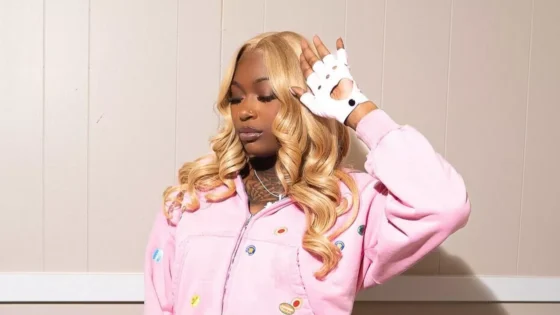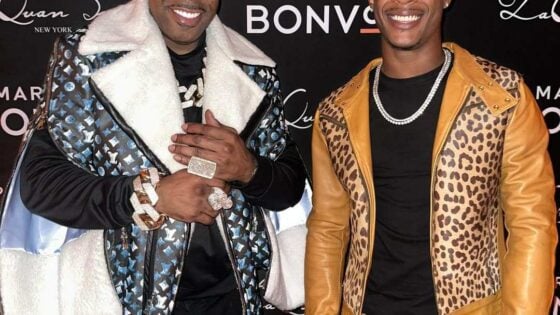Spike Lee followed 2013’s underwhelming Oldboy with a far more engaging reworking of a cult classic. In Da Sweet Blood of Jesus, Lee updates Bill Gunn’s Ganja and Hess – an expressionistic vampire feature which uses its horror trappings as a way to reflect on deeper socio-political concerns of black identity, cultural imperialism and the place of religion in 1970s America. This is, then, prime material for Lee, and although Da Sweet Blood of Jesus sticks closely to the plot, characterization, and dialogue of Gunn’s original, the filmmaker finds a way to put his own distinct spin on the source material. The personal stamp is evident from its very first moment, an intoxicating montage comprised of shots of the street dancer Lil Buck Jooks languidly breakdancing across a series of Brooklyn locations to Bruce Hornsby’s soft, melancholy string score. The sequence self-consciously recalls the iconic opening scene of Do the Right Thing, although Rosie Perez’s defiant, exuberant movements have been replaced by a register that is more gentle and resigned. The street dynamic street tableaux form a kind of mini-travelogue which captures, in only 3 minutes, Lee’s New York in microcosm: a Knicks-branded basketball court; a housing project in development; an alleyway marked with graffiti; Red Hook church; and a picturesque riverfront from which the Statue of Liberty can faintly be seen in the far distance. It’s a breathtakingly beautiful scene, simultaneously reflecting on Lee’s artistic legacy, the history of his hometown, and the persistence of racial inequality.
This is, then, clearly a late-period work, then, and, although Lee’s sense of hope for the establishment of a fairer society can never be fully extinguished, a sense of deep melancholy infuses every moment of Da Sweet Blood of Jesus. It is difficult to not detect a note of self-implication in Lee’s portrayal of Dr. Hess Green, a moneyed African-American art historian who struggles to balance his desire to remain true to his cultural roots with the pressure to assimilate into the codes of white elitist society which is an integral part of being rich in the United States. To be wealthy, for Hess, means having the cultural position to preserve countless priceless African artifacts, but it also means profiting from the capital of a country built on the systematic exploitation of blacks, and which continues to accrue wealth through the structural marginalization of minorities. In an early scene, Hess warns a black co-worker not to visit him at home unannounced, as he is the only non-white living in Martha’s Vineyard, and their meeting may arouse paranoia in his neighbours. Regrettably, Hess is often put in the position of presenting his collection of artifacts to a white audience who view them as nothing more than decorative consumer objects. America is, as Hess describes it, a “blood society”, in which the privileged parasitically profit from the suffering of those less fortunate. This metaphor is literalized when his unstable co-worker Hightower stabs him with a cursed Ashanti blade, forcing upon Hess an insatiable appetite for blood. At first, Hess tries to satiate this desire through peaceful means – stealing sacks from a blood bank and feeding off the corpses of men who have died in other circumstances – but soon his more predatory drives take over, and he begins to prey on living victims; his targets are predominantly female, black and belonging to a lower economic class.
In contrast to the formal hysterics of Gunn’s original, the tone of Da Sweet Blood of Jesus is eerily placid. It is composed of elegant, wide-screen images which project a consistent sense of grace that is at odds with the often grotesque violence on display; the vibrant, sunlit colour palette – awash with golds, searing reds, and light blues – is a far cry from the murky, under-lit tones of Gunn’s film. This surface calm is expressive of the bubble of privilege that Hess’ wealth has built up around him, allowing him to exploit society’s have-nots while remaining fundamentally alienated from their experience. Lee has also replaced the crumbling Victorian castle of Ganja and Hess with a chintzy beachside villa, a modernist spectacle constructed mostly out of glass walls and faux-marble surfaces. Hess has covered the place with African objet d’art, as if straining to feign off the effects of gentrification and provide a concrete link to his heritage. Lee’s Hess is less a ravenous monster than a pained, aloof, distant man unable to reconcile his personal morality with his vices; be that blood, sex, alcohol, or luxury commodities.
Hess’ hermetic isolation is interrupted when the deceased Hightower’s wife, Ganja, arrives at the mansion looking for her husband, but, instead falls into Hess’ arms. The two begin a passionate love affair which soon sees them both descend into bloodlust, and it is these scenes that Lee demonstrates his often-overlook aptitude for tender eroticism. Lee compliments the rhythm of the images with a remarkably rich aural texture, combining Hornsby’s mesmerizing score with a soundtrack that encompasses minimalist hip-hop, industrial rock and neo-soul. Lee carefully compiled the songs from an online open call for unsigned musicians, part of a wider ambition to produce as much of the movie outside the confines of the studio system as possible, which included a very public Kickstarter campaign to raise the meager $1.4 million budget. The shoestring nature of its production may lend Da Sweet Blood of Jesus the appearance of a minor work, but, under closer inspection, it reveals itself to be one of the richest and most experimental works in the recent filmography of one of our greatest living auteurs. For over two decades, Lee, unfortunately, failed to receive the critical or commercial attention that greeted the release of his earlier canonical masterworks like Do the Right Thing and Malcolm X. Hopefully the phenomenal success of BlackKklansman last year will inspire a wider re-appraisal of unjustly maligned works like Da Sweet Blood of Jesus, Chi-Raq, and Red Hook Summer.


































Dome
March 17, 2019 at 3:15 am
So true, a well written synopsis of the movie. Its not the Spike lee movies its the man people dont like. Their reasons are simply obvious as Spike touches the right nerves, that’s why he is s great director. I love the movie so many stories as brilliantly said in the movie. Most critics also are not true to the job, looking gor for something to criticise,, then the haters being narrow minded seize on this without watching or jusr fail to see what I and others see. Just reminded me need to see it again.